VASSALBORO — The car bounced off the paved driveway and onto the nearby lawn, its three passengers throwing beer cans out the window and yelling over music coming full-blast out of the stereo.
A Maine State Police cruiser hot on the car’s tail flashed lights as one of the troopers, through a loudspeaker, ordered the driver to stop the car.
The car came to an abrupt stop, but the guys in it weren’t ready to give up the chase. They bolted away from the cops, toward some low shrubbery on the edge of the lawn.
That’s when the doors of the cruiser flew open and two four-legged furry officers bounded out, racing full-tilt after two of the men from the car. When they got close enough, the dogs leaped, clenching the men’s forearms in their jaws and stopped them long enough for their human partners to catch up and make an arrest.
The third car occupant, running in the opposite direction, was stopped the same way, when a third dog hidden in the trunk of the cruiser popped out and ran him down, dragging the man to the ground.
The whole scene was over in less than two minutes.
Of course, none of it was real, but the drill, staged in front of the Maine Criminal Justice Academy in Vassalboro, gave a sense of the types of situations law enforcement K-9 teams face and the level of training required for the job.
Minutes before, six teams, in full dress uniform, had assembled with fellow officers, friends and family in the academy gymnasium for the formal graduation. In all cases, both members of the teams looked more comfortable dressed down and working outside.
The teams included handlers from Maine State Police, a Waldo County Sheriff’s Office Deputy and an officer from the Bangor Police Department. They will join about 100 other teams in police agencies across the state.
The officers’ four-legged partners, however, came from farther afield. Almost all the dogs selected to train with the police are from Europe, said Maine State Police Cpl. Seth Edwards, the school’s lead trainer. American dogs tend to be over-bred and don’t have the stamina and longevity. Breeds like malinois, German shepherd and Dutch shepherd are popular choices.
“It’s rare to find a dog that meets our qualifications,” Edwards said.
Doyle, a German shepherd-Belgian malinois mix, was one of those dogs.
The state police bought Doyle at 8 weeks old, and he was raised with help from state prison inmates. At 6 months, the puppy was turned over to Barry Meserve, a 17-year state police veteran who had two previous dog partners. Doyle is named after one of the school’s former trainers.
The intensive training lasts 14 weeks and includes instruction in tracking, searching a building, criminal apprehension, agility and obedience. After going through the course, the teams can find a missing person, track a suspected criminal through the woods, locate important evidence or missing equipment and take down someone threatening their handler.
The majority of the calls for K-9 units are for tracking, Edwards said, and the teams get used to being called in at all hours to pursue a suspect through rough terrain and rougher weather.
Most of the dogs selected for the course are 1 to 2 years old, but one of the graduates started the course at age 3 1/2.
Basic training, called patrol school, is only the first step. The K-9 teams probably will take additional courses, such as narcotics detection. When they are fully trained, the teams will put in two days of academy training a month and get re-certified every year, Edwards said.
It’s a position that requires a particular skill set but also demands an emotional investment. The officers and dogs are together constantly, and dogs live with their handlers off-duty.
Sometimes an officer can feel as though he or she is spending more time with the dog than with the family.
“K-9 is a lot of work,” Edwards said. “If you’re on the dive team, when you get done with a dive you put your stuff in your trunk and you close it and you’re done. Not with K-9. You’ve got the dog all the time.”
That level of dedication can be intimidating, not just for the officers, but also their families.
Krystal Levesque, from Caribou, said she was initially dead set against her husband, state police Officer Andrew Levesque, entering the program.
“I said no,” Levesque said. “I had a chocolate Lab, and I didn’t want another dog in my house.”
After the first week, she wanted her husband to take Vitz, a German shepherd, back. But that changed after the pair started training. Vitz’s behavior improved and the dog quickly became part of the family.
The perception of Vitz as a tough police animal initially turned her off to bringing it into her house, Levesque said.
“When you think of a K-9 dog, you think of biting and being aggressive,” she added.
“But he’s just a sweet dog. He knows the difference between home and work.”
Peter McGuire — 861-9239
Twitter: PeteL_McGuire
Send questions/comments to the editors.


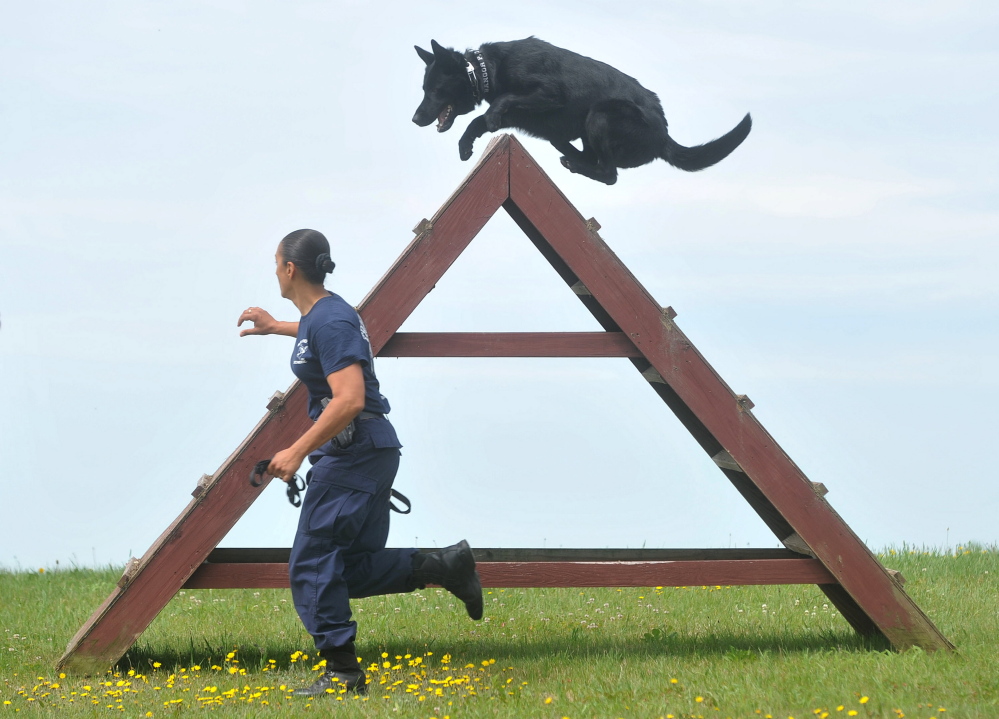
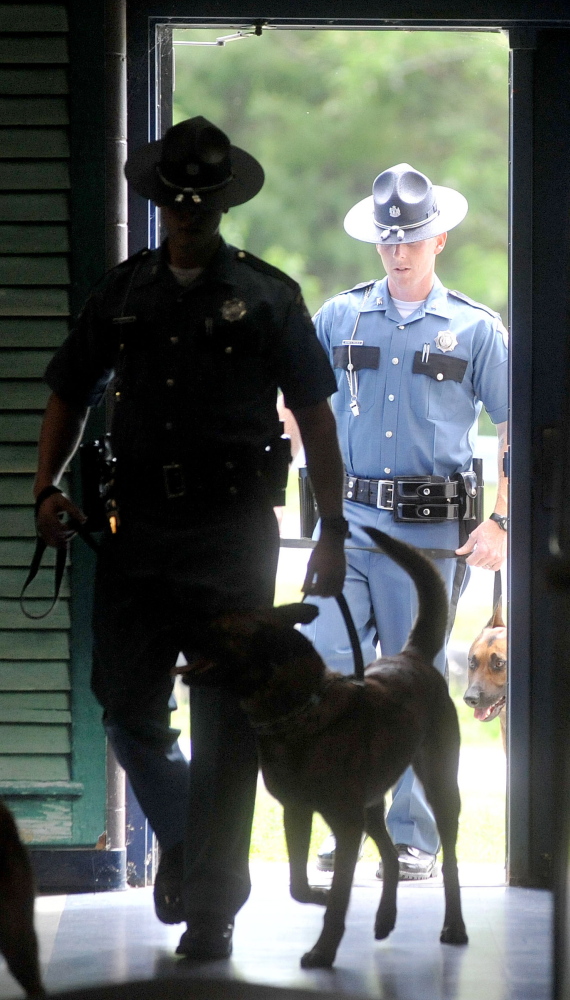
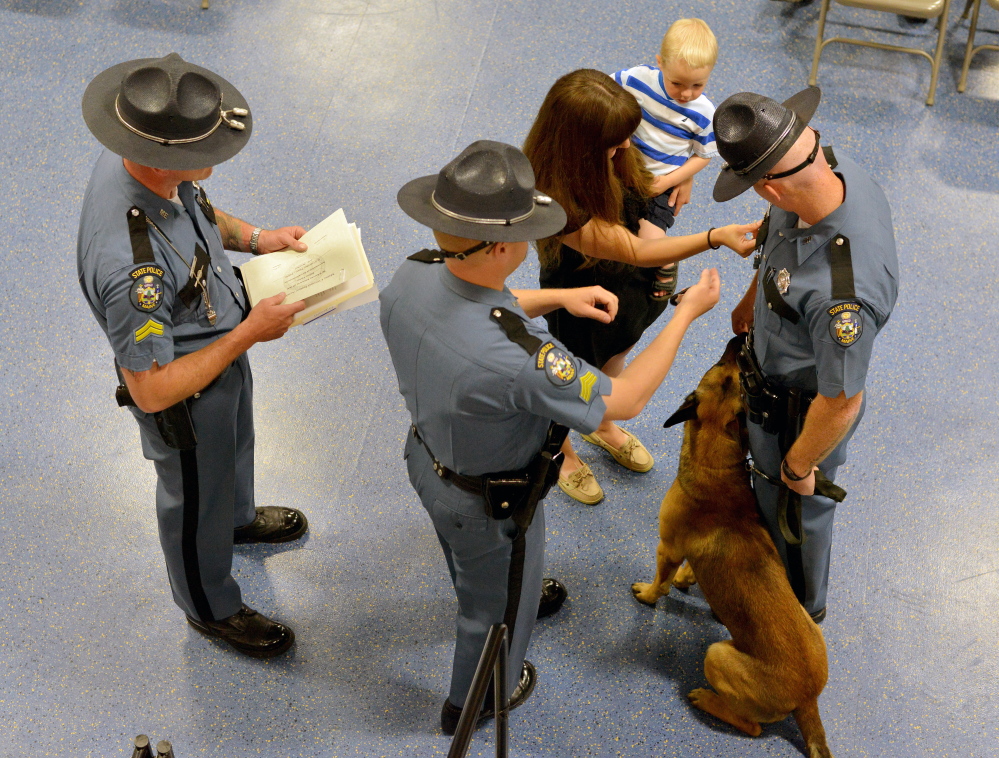
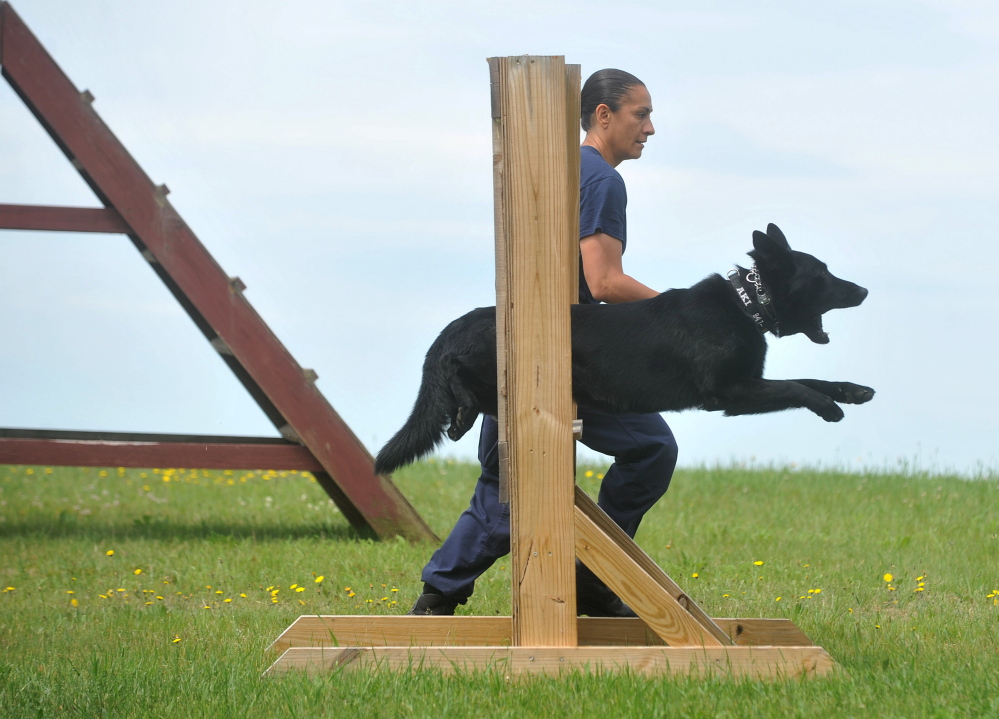
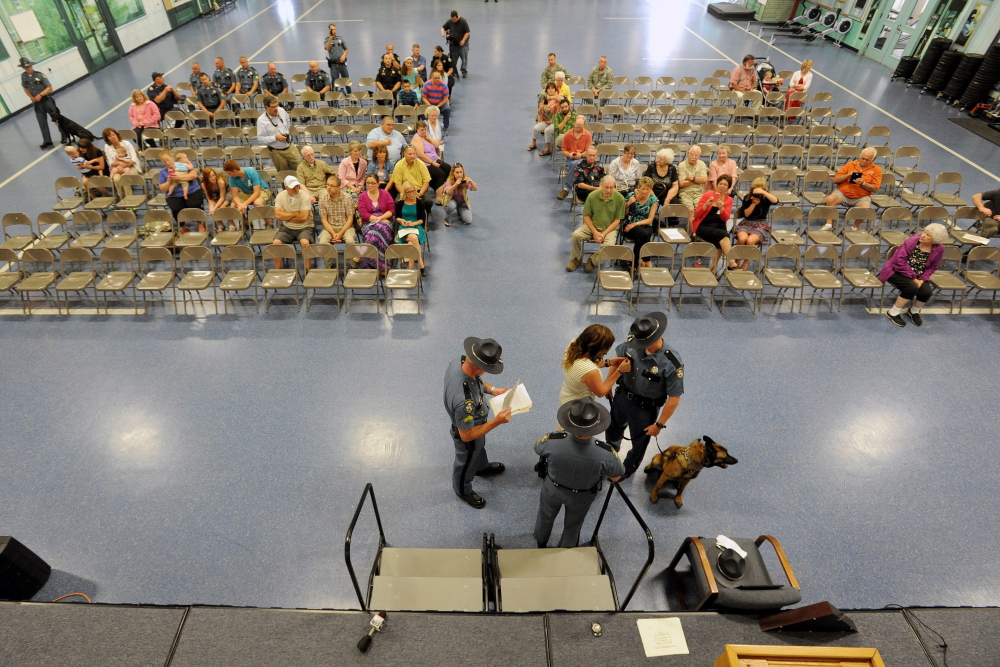
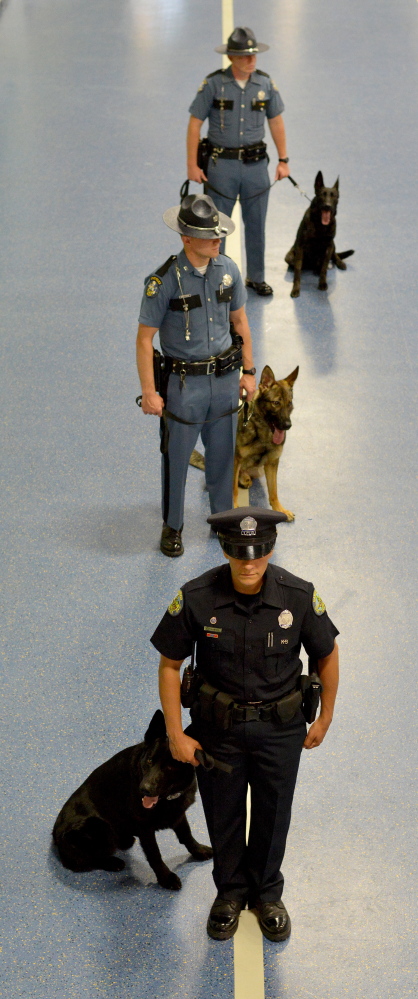
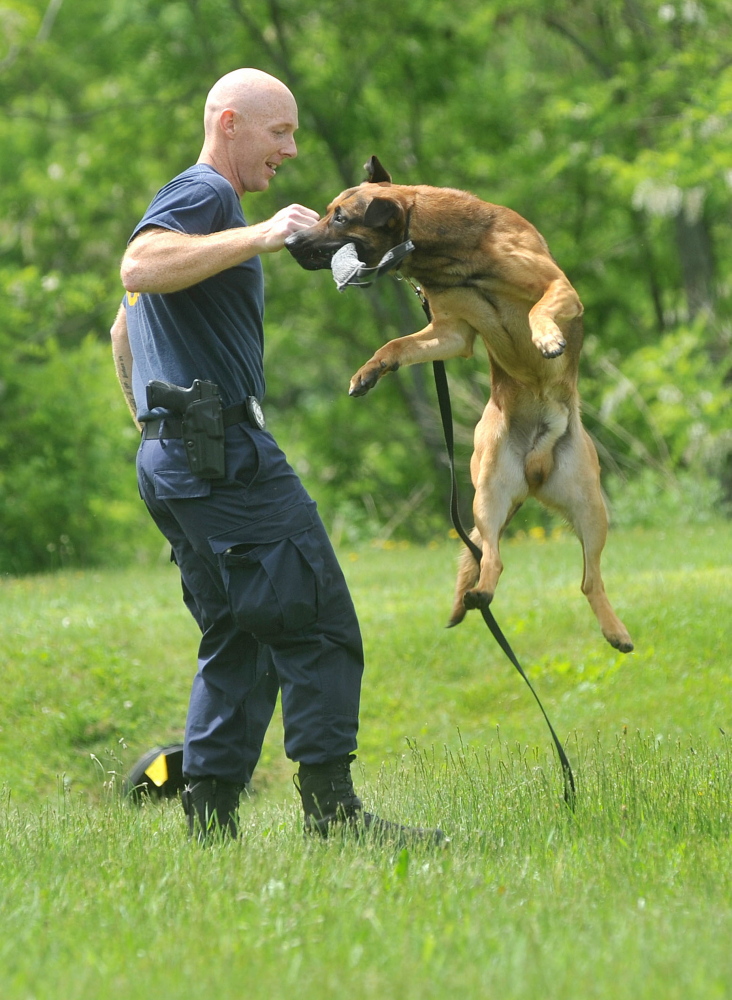

Success. Please wait for the page to reload. If the page does not reload within 5 seconds, please refresh the page.
Enter your email and password to access comments.
Hi, to comment on stories you must . This profile is in addition to your subscription and website login.
Already have a commenting profile? .
Invalid username/password.
Please check your email to confirm and complete your registration.
Only subscribers are eligible to post comments. Please subscribe or login first for digital access. Here’s why.
Use the form below to reset your password. When you've submitted your account email, we will send an email with a reset code.